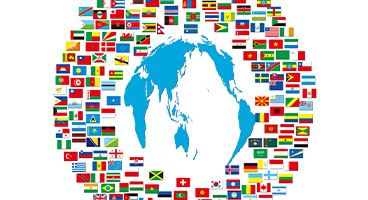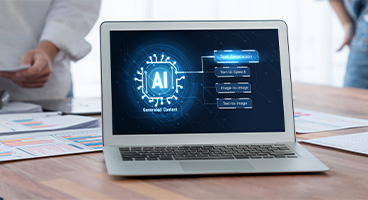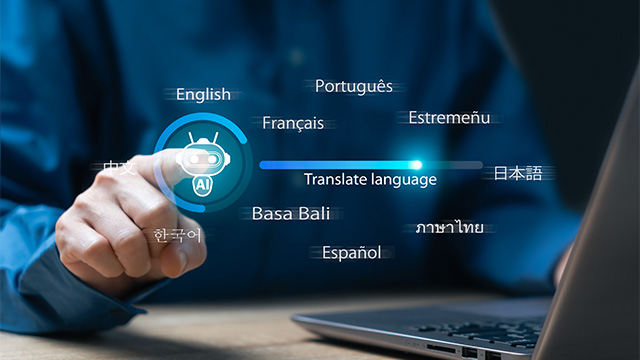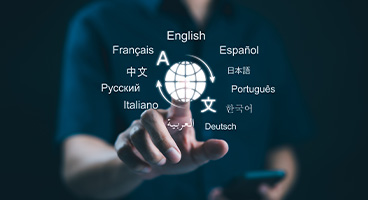
- Table of Contents
-
- 1. What are the key points to streamline translation work?
- 1-1. Utilization of Machine Translation and Post-Editing
- 1-2. Utilization of CAT Tools (Computer-Assisted Translation Tools)
- 1-3. Utilization of Translation Management Systems (For Project Managers)
- 2. Types of services that can streamline translation and their respective advantages and disadvantages
- 2-1. Machine Translation
- 2-2. CAT Tools
- 2-3. Translation Management System
- 3. Summary
1. What are the key points to streamline translation work?
There are three ways to streamline translation operations.
1-1. Utilization of Machine Translation and Post-Editing
Technologies using AI are becoming widespread. AI translation tools like DeepL are one of them, and machine translation along with post-editing has become essential in the translation industry. By implementing machine translation and post-editing, it is possible to shorten the translation period and reduce translation costs, regardless of the volume of the text to be translated.
However, since machine translation may contain errors, it is necessary for a human to check and correct the translations produced by machine translation. This process is called "post-editing." For example, when there is a need to translate a large amount of text in a short time, machine translation is first used to translate the entire text, and then a human performs post-editing.
[Updated for 2025!] 5 AI Translation Tools - A Comparison of Features!
1-2. Utilization of CAT Tools (Computer-Assisted Translation Tools)
In translation work, multiple individuals are involved, including project managers (coordinators), translators, and reviewers (checkers). Among these, CAT tools particularly support the work of translators and reviewers, improving the efficiency of translation tasks and the quality of translated texts. CAT tools are equipped with four functions: translation memory, machine translation, terminology databases, and quality checks, with translation memory and machine translation enabling the efficiency of translation work.
Translation memory is a database that stores pairs of original texts and their translations that have been translated in the past. During the initial translation, the original text and its translation are registered in the translation memory, and thereafter, by referring to the translation memory, there is no need to translate the same sentence multiple times. For sentences that do not exist in the translation memory, we collaborate with external machine translation services to perform machine translation and then post-edit.
For an overview of CAT tools, please see "What are CAT Tools? Explanation of Advantages and Disadvantages".
1-3. Utilization of Translation Management Systems (For Project Managers)
On the other hand, the translation management system supports and streamlines the work of project managers. By implementing a translation management system, benefits such as information centralization, process automation, and confidentiality can be obtained. Among these, information centralization and process automation contribute to the efficiency of translation work.
By centralizing information, the exchange of files among workers such as project managers and translators is streamlined, reducing the translation period. Additionally, through the automation of processes, manual email exchanges among workers become unnecessary, similarly shortening the translation period.
For an overview of the translation management system, please see "What is a Translation Management System".
2. Types of services that can streamline translation and their respective advantages and disadvantages
2-1. Machine Translation
Representative services include DeepL and Google Translate. Generally, DeepL provides more fluent and natural translations. However, it often experiences "translation omissions," where sentences or phrases from the original text are missing in the translated text. As for Google Translate, while it may lack fluency, it tends to be more faithful to the original text, resulting in fewer translation omissions. Both can improve translation speed, shorten translation periods, and reduce translation costs.
For more details on the translation accuracy of DeepL and Google Translate, please see "Latest Trends in Machine Translation and Comparison of DeepL and Google Translate".
2-2. CAT Tools
The representative tools include MTrans Team, Phrase TMS (formerly known as Memsource), and Trados Studio. Basically, MTrans Team and Phrase TMS work through a web browser, while Trados Studio requires software installation on a computer.
The advantages of the MTrans Team are that anyone can easily use machine translation with drag and drop. It has a user-friendly UI compared to the other two products, and the price is affordable. The downside is that an internet connection is always required.
The advantage of Phrase TMS is that it can be operated solely through a web browser. Many companies have been forced to work from home due to the COVID-19 pandemic, but as long as there is a web browser, translation work can continue. Additionally, since a certain number of translator accounts are included in the project manager's account contract, translators can use Phrase TMS for free. The downside is that a constant internet connection is required, and if the quality of the connection is poor, it may hinder translation work.
The advantage of Trados Studio is that it does not require an internet connection. If the performance of the computer is sufficient, it can be used comfortably regardless of the quality of the internet connection. The disadvantage is that translators also need to pay for the license fee.
Any CAT tool can improve translation efficiency, prevent translation omissions, enhance collaboration efficiency, and streamline the work of reviewers. For more details on MTrans Team, Phrase TMS, and Trados Studio, please see "Comparison of CAT Tools - What Points to Consider?".
2-3. Translation Management System
Our representative services include Phrase TMS (formerly Memsource) and Trados GroupShare. The advantage of Phrase TMS is that it integrates CAT tools and translation management systems, both of which are provided as cloud services, allowing for immediate use with just a web browser and easy implementation. Trados GroupShare offers services in both software and cloud formats; if you contract the software, you will need to prepare your own server and handle the setup and management. In the case of the cloud, your own server is not required. The choice between Phrase TMS and Trados Studio as your CAT tool will determine the translation management system you use.
3. Summary
By implementing machine translation and post-editing, CAT tools, and translation management systems, you can streamline your translation operations. If CAT tools are not yet in place, it is common to first introduce CAT tools and then implement machine translation.
At Human Science, we leverage our years of experience as a translation company to assist with the implementation of MTrans Team and Phrase TMS. We offer machine translation solutions called MTrans for Phrase TMS and MTrans for Trados, which enable the use of machine translation services such as DeepL, Google, Microsoft, and NAVER Papago with Phrase TMS and Trados, as well as post-editing services. We also accept requests for free trials, so please feel free to contact us.
Related Services
MTrans TeamMTrans for Phrase TMS
MTrans for Trados


























